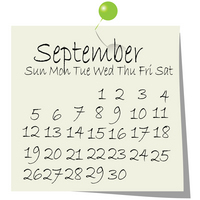 Back when I was taking my technical writing certificate at Seneca College in Toronto, one of my professors (Beth Agnew, @professorsan) spent three hours chatting with us about what it’s like being a freelance technical writer. She laughed a lot about the highs and lows of freelancing, but a few things she said jolted me out of my assumptions and made me sit up and pay attention. One of them was that she would take literally any job that had anything remotely to do with editing, writing, or teaching. Or websites. Or technology. Or people. Or extreme ironing. Her profile summary reads like a list of consultants at the STC Summit: “Writer, editor, educator, coach, business improvement consultant, SEO sage, social media swami, and online marketing maven. If you want something done, ask a busy woman!”
Back when I was taking my technical writing certificate at Seneca College in Toronto, one of my professors (Beth Agnew, @professorsan) spent three hours chatting with us about what it’s like being a freelance technical writer. She laughed a lot about the highs and lows of freelancing, but a few things she said jolted me out of my assumptions and made me sit up and pay attention. One of them was that she would take literally any job that had anything remotely to do with editing, writing, or teaching. Or websites. Or technology. Or people. Or extreme ironing. Her profile summary reads like a list of consultants at the STC Summit: “Writer, editor, educator, coach, business improvement consultant, SEO sage, social media swami, and online marketing maven. If you want something done, ask a busy woman!”
I figured that if you are in business for yourself, then you have some degree of control over what you choose to do every day. You take the jobs that interest you or the ones that most align with your strengths. That seems reasonable, right?
The reality of freelancing is a little different. Clients ask you to reach outside your comfort zone, to customize your services for their needs, to learn, enhance, and help them on areas you might not even have considered. I, too, have found that my initial title of “technical writing freelancer” blossomed quickly into an array of services I could never have predicted: article author, technical writer, technical editor, content strategist, trainer, teacher, tool master (CCMSs and XML editors), small business consultant, process analyst, business analyst, researcher, information manager, project manager, documentation manager, and information architect, including taxonomy/classification and search. I do not market all of these as my services—they’re not even all on my resume because it makes me seem a little scattered, but they are all certainly the things I do regularly for my clients. That list, by the way, is growing all the time.
I decided during that year at Seneca College that I would go it alone at some point—and a few years later I had the perfect intersection of opportunity and circumstance that gave me the push I needed. I would like to say “I’ll never go back to cubicle life again” but if I’ve learned one thing as a business owner, it’s that I never know what’s around the corner. I’ve also learned to never think “never”. Mostly.
Let me share what else I’ve learned as I’ve transitioned from student to full-time employee to part-time consultant (on the side) to full-time consultant over the last eight years, while balancing three houses, two cities, one wedding, and two kids.
Are You Ready?
 It’s a bit like learning to fly: You’ll never be ready. Inevitably something pushes you out of the nest and you either start flapping your wings really hard or you end up crashing in the dirt. This push can be either in your personal life (like moving to a city that is already overloaded with skilled technical writers—hello Ottawa!) or your professional life (like not getting the raise, the position, or the manager that you wanted).
It’s a bit like learning to fly: You’ll never be ready. Inevitably something pushes you out of the nest and you either start flapping your wings really hard or you end up crashing in the dirt. This push can be either in your personal life (like moving to a city that is already overloaded with skilled technical writers—hello Ottawa!) or your professional life (like not getting the raise, the position, or the manager that you wanted).
The question is not quite “are you ready?”; it’s more like “are you willing to work really, really hard until things take off?” or “can you handle the risk if it doesn’t work?”. In the end, only you can decide if you’re ready for freelancing, but I’ll give you some food for thought.
What you leave behind
- Politics (mostly): You’ll be outside the politics, but you might be a pawn in someone else’s politics or someone may try to entangle you in theirs. Take no sides!
- Co-workers, water cooler talk: They might drive you nuts now, but if you’re going to be working from home (not always the case), it can be awfully lonely sitting in your house, plugging away at something without anyone to chat with. If you’re on site, be prepared to be treated differently than an employee. You’re freelancing status means you’re probably paid more, can be let go at the drop of a hat. You’re different and the full-timers may want to remind you of that—sometimes resentfully. Don’t take it personally.
- Benefits: All kinds, including health, 401k/RRSP, daycare, paid vacation, bereavement, and sick leave, and whatever else your full-time employer provided. If you have a spouse with a full-time job and full benefits, make sure you’re included on those benefits, and any dependents are also listed. Double check. Triple check. Don’t forget to do this.
I have not had a vacation that didn’t include work in over six years. At some point, I hope to get to the point where I can say “Sorry, I’m on vacation. I’ll be back in two weeks.”, but I’m not there yet. Any time I take off of work means money that is not earned. Full stop.
- Stability: Again, you’re better off with a spouse who has a rock-solid job (a union position is a bonus) or could easily find another job if they are laid off or their company merges, is taken over, or whatever. Stuff happens to jobs. Make sure you have a plan to keep eating if it does.
- Free hardware/software and IT support: You’ll need to buy your own computer, software, hardware, and office equipment (write it all down, pre-tax and post-tax, and keep the receipts). Also, be prepared to be your own IT departmentwhen Outlook stops working, your ISP does something funky with the ports, or your computer has a nervous breakdown. Tip of the day: Back things up. Whether you use Norton Ghost or an online tool, make sure your entire hard drive is backed up so you can recover from a fatal hard drive crash and keep on going without missing a beat.
What you gain
- Sole responsibility. Being your own boss. (I found out that I’m a really tough boss, much tougher than any manager I’ve ever had.)
- Ability to work from home (unless you’re an on-site contractor, in which case you’ll have a series of new offices).
- Better pay. On average, you’re going to make more money per hours worked. However, you may work fewer (billable) hours. Also, you’ll have higher costs.
- Flexibility. I balance two kids and a consulting business. I can take the kids to the zoo this week, but I may have to work late into the night next month to get something done the client needs first thing in the morning.
- Gray hair. You’ll worry about marketing, budgets, and where your next pay check will come from. You’ll worry about whether you’re working too much or too little. I thought this part of the job would be too much for me because I’m a born worrier anyhow, but I find that my innate ability to worry about possible problems makes me a fantastic planner, even though I’m always planning for the worst.
- About two dozen new skills, from time management to accounting to marketing—and those are just the non-technical writing skills. I have easily doubled my skill set in the last few years.
Timing Is Everything in Freelancing
 If you’re happy where you are, doing what you’re doing, then stay where you are. However, if things are not so great and you’re ready to make the jump, you still need to time things right.
If you’re happy where you are, doing what you’re doing, then stay where you are. However, if things are not so great and you’re ready to make the jump, you still need to time things right.
- Do you have enough money in the bank to support you (and your family) for the next 6 months to a year? Unless you’re already an established name in the business, you’ll be moving from job to job with possibly months between them. That nice, steady pay check will be a fond memory. You’ll have busy and lucrative months but you’ll also have months when you work really hard but have very little income (where you’re looking for your next job or writing proposals, re-writing your resume, building your website and brand, developing marketing strategies, or just blogging). I made sure I had enough money to pay the mortgage and feed everyone for a year even if I didn’t make one red cent.
- Do you have a client? There’s no point in handing in your notice until you get an actual client who will pay you money. When you first start, you may also want to barter for services (for example, you agree that I’ll write your documentation if you design and build my website) or use an agency. But if you have any choice in the matter, do not resign until you have a signed proposal or contract in your hot little hand.
- Do you have the time? It takes a lot of effort and time to launch your business. If you’re thinking you’ll be sipping wine in the backyard every afternoon, you’re wrong. It’s every other afternoon (and you’ll also be designing your marketing plan or networking your way to your next contract).
Preparation Is Key in Freelancing
You may never be ready, but at least you can be prepared. It may seem odd to prepare after you get your first client, but that’s the way it often works. Get used to it; you’ll probably be doing things backwards for the first few years.
- Develop a business plan (point form on a napkin is OK, so don’t get scared by this one, but definitely do a lot of thinking).
- How will you get more clients? Who is your target client? What are your services? What’s the minimum you will work/trade for? All these answers can evolve as your business grows, but you should have some idea of an initial answer before you begin.
- Pick a name and register. In Canada, you decide if you want to be incorporated or just a sole proprietorship/partnership, register your business with the federal government, get your HST number, and off you go. Look up the requirements in your country.
- Consider insurance. There are basically two kinds of insurance for freelancers: Personal Liability and Errors and Omissions. Personal liability is more generic and can help protect you in case of any sort of lawsuit or disagreement between parties. It is also fairly affordable (roughly $200/year in North America). Errors and Omissions is much more difficult to get and more expensive as well ($2000/year). If you decide not to get it, make sure you’re making an informed decision—do your research first. Also note that some agencies and governments require you to be incorporated and insured. If a company/government body is asking you to have Errors and Omissions insurance as a pre-requisite for hiring you, you do have some leverage to push back and say “you’ll be reviewing my work anyhow, I shouldn’t need this.”
- Change your LinkedIn information and build your network. That’s the fastest way to advertise your new professional role and may get you some leads right off the bat.
 Build your website and brand. Not everyone needs a website, but it can be the platform from which you blog, develop your brand, acquire new clients, and showcase your skills and services.
Build your website and brand. Not everyone needs a website, but it can be the platform from which you blog, develop your brand, acquire new clients, and showcase your skills and services.- Talk to your small business accountant about all this stuff. (So go get an accountant.)
- Open business bank accounts. Start keeping track of your income and expenses separately from your personal money.
- Develop a budget and decide how you’ll track hours, clients, expenses, and income. This can be anything from using Quicken or another small business accounting tool to using Google Docs to create and track everything you do. If it’s billable, write it down. If it’s not billable, track it (by writing it down).
- Develop an invoicing template. This doesn’t have to be fancy. You can use a Microsoft Word template or use an online service like Invoice Machine or even PayPal. You’ll want to detail the activities you have completed and the hours spent on each, as well as your rate per hour, subtotal, and total with tax. Add any expenses you’ve incurred that the client has agreed to pay.
- Do your research into taxes and understand what you should be charging your clients.
- For example, if you live in different geographic location, do you charge your tax rate or theirs? Within Canada, the HST charged is that of the province of the company that hired you (their HQ location), and the rate changes depending on the province. If you’re invoicing an international client, you don’t charge tax at all.
- Also work out how much income tax you should be putting aside with every pay check, and how you’ll file your taxes with Eternal Revenue—whoever that body may be.
In the next part of this series, I’ll look at the factors to consider when setting your rate and what you should think about when creating your portfolio.